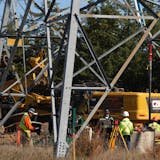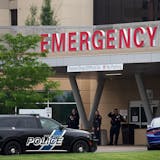Jazz saxophone legend Charles Lloyd is having a moment. Again. At age 87. And it’s remarkable.
Not only was he voted by DownBeat critics as artist of the year (for the second consecutive year) but also album of the year, top tenor saxophonist and named to DownBeat’s Hall of Fame. (He first won DownBeat’s artist of the year in 1967.)
“This was an unexpected honor — it was pointed out to me that the only other person to have received this quadruple honor was John Coltrane,” Lloyd said. “That put me in company with the highest. I am grateful for the acknowledgment.”
Lloyd, who has been a regular visitor to the Dakota in Minneapolis, will perform Sunday with his quartet at the Ordway. It’s one of about five or six different ensembles with which he regularly works, including the Marvels with Lucinda Williams and Bill Frisell.
Lloyd, a saxophonist and flutist, has a long history of collaboration, not only with jazz greats like Ornette Coleman and Keith Jarrett but with rock legends like the Grateful Dead and the Beach Boys, with whom he recorded and toured in the 1970s.
In an email interview, he talked about his career, the Dead as well as his old Memphis pal Elvis Presley and his old Greenwich Village neighbor Bob Dylan.
Q: Congratulations on all the DownBeat awards. Why do you think you’re getting your flowers again at this stage of your career?
A: There is a season for everything.


